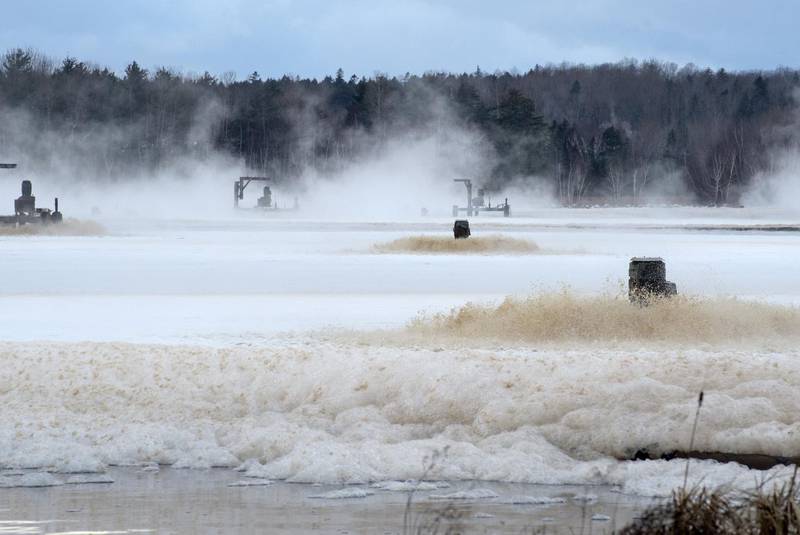
KJIPUKTUK (Halifax) – As Lana Payne, the Atlantic regional director of Unifor, writes in the Chronicle Herald, a solution for the Northern Pulp conundrum must be found.
There are lots of issues to navigate around in the quest for a solution, some left unaddressed in the op-ed. There is the pipe into the Strait and a suspect provincial approval process, there are the jobs and livelihoods of fishers, mill workers, and forestry and tourism workers that are at stake. There are local residents who worry about long-time exposure to toxics, and that smell.
But finding a solution for the incredibly complex problem that is Northern Pulp begins with facing a hard truth, the truth of environmental racism. That truth should not be wiped under the rug once again.
The mess of the Boat Harbour lagoon is the result of some 50 years of broken promises. Breaking these promises was never considered that big a deal, because Pictou Landing is merely a Mi’kmaw community. It’s not like its residents were white, or had money.
The betrayal started even while the lagoon was still in the planning stage, when Pictou Landing residents were told that the lagoon would be great for tourism. Or when they were given a tour of a similar treatment facility elsewhere, nice and clean, no smell at all. What they weren’t told was that the plant wasn’t operative…
And so it continued. In 1991, ’95, ’97 and 2008 the Pictou Landing First Nation were promised that Boat Harbour would be cleaned up. It never happened. There was always a reason, and typically that reason involved jobs at the mill.
See also: Book review: Joan Baxter’s the Mill – Fifty years of pulp and protest
You can read the entire story of betrayal after betrayal here, in a victim impact statement submitted by the band after Northern Pulp pleaded guilty to Fisheries Act violations after a pipe burst in 2014.
Or you can watch the moving video documentary A’sek, Mi’kmaq for the other room, about the transformation of Boat Harbour from a beautiful body of water, great for swimming, fishing and hunting, to a poisoned dumping ground for first Scott Paper, and now Northern Pulp.
“It’s time for everyone to roll up their sleeves and find a solution. Unifor would like to be part of that discussion. We are calling on Premier McNeil to show political leadership, to bring the stakeholders together, to stand up for good jobs and the environment,” writes Payne.
Rolling up their sleeves and finding a solution could be taken to mean that a commitment to Pictou Landing First Nation will be broken once again.
I hope that’s not what Payne has in mind, but I simply don’t know. When it comes to describing what a solution would look like the editorial is rather ambiguous. The op-ed is supportive of the closure of Boat Harbour, but it is silent on the date of that closure. Northern Pulp has asked for a one-year extension, so the idea is clearly out there.
The closing of Boat Harbour in January 2020 is not a casual commitment. It’s a commitment that government and opposition parties alike enshrined in legislation, albeit legislation without sanctions or penalties.
The Pictou Landing First Nation website features a countdown clock which tracks the hours, minutes, and seconds until Boat Harbour will be officially closed, in January 2020. Pictou Landing First Nation has been unwavering in its insistence that government for once stick to the timeline it has laid out.
“Rolling up their sleeves and finding a solution” should never be another way of telling Pictou Landing First Nation to please step out of the room while the mill and the province hammer things out.
See also: The power–politics of pulp and paper: Health, environment and work in Pictou County
With a special thanks to our generous donors who make publication of the Nova Scotia Advocate possible.
Subscribe to the Nova Scotia Advocate weekly digest and never miss an article again. It’s free!



